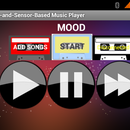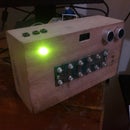Introduction: Android Tablet to Android PC Desktop
If we are going to add US and China's Electronic waste, 6 Million tons of computers, phones and electronic parts are disposed yearly [wiki]. I decided to turn my old Android tablet with broken touch panel into Android PC Desktop using simple hack and recycling. And viola, I just made a mini PC with most popular Linux operating sytem that can execute browsing, spread sheet, media player, games, editing, programming etc. This simple hack can be applied to any android tablet that has USB host capability or you can use USB otg.
I’m using a CKK Android tablet (Made in China). Here is the specification.
MID 1.2GHz 8GB 7-inch Capacitive Touchscreen Android 4.0 Tablet
General Features:
Black design, white Back cover
Google Android OS 4.0 pre-installed
7-inch TFT capacitive touch panel
800 x 480 resolution
1.2 GHz processor
512 MB RAM
8 GB internal flash memory
microSD/SDHC card slot
USB 2.0 interface
Integrated IEEE 802.11b/g Wireless LAN
Built-in front-facing camera
G-sensor function provides orientation sensing
Built-in rechargeable lithium battery
Supports 3G dongle - See lists on screenshot
Mini HDMI out on bottom
USB 2.0 host port (the one we need)
USB mini B port
3.5 mm headphone jack
Step 1: Materials
All you need
1. An Android Tablet(broken touch panel with USB host)
2. Mouse(I borrowed from my laptop)
3. Keyboard(salvaged from tablets flip cover keyboard)
4. LCD stand(I build my own stand using plywood, spacer, nuts and bolts)
5. Speaker(optional)
6. USB hub(4 ports, enough to connect flashdrive, mouse and keyboard)
As you observed, the secret is on the USB hub. Without the touch panel, you can still use your tablet using mouse and keyboard; the hub will provide multiple USB ports. We will use USB optical mouse and USB keyboard.
Step 2: The Tablet
Remove what we need
1. LCD
2. Battery(usually in gray color)
3. Circuit board
4. Loud Speaker(optional)
* A BIG NOTE
1. As much as possible, do not touch the circuit board. You may use ground strap to discharge static electricity out of your body.
2. Never bend and damage the battery.
3. Avoid leaving a scratch in your LCD
4. Detach touch panel FFC(flat flexible cable)
5. Take good care of LCD and camera FFC, (once teared, say goodbye to your LCD or camera).
Step 3: Holder Stand
You can make or you may buy a holder stand that can fit to your tablet.
As guide if you will just build your own, here are some images I provided. I used 5 inches by 6 inches and 1.5 inches by 4 inches plywood. I drilled 3 holes to the bigger one and 2 holes to the other. A bunch of nuts and bolts that attach the two pieces of plywood together and serves as holder of the LCD (refer to photos above). You are free to alter or design your own stand, as long as it hold the LCD, it's good to go.
Step 4: USB Hub
I have a USB hub for less than $2 with 4 ports. Unfortunately, it has short cable connector so I need to extend the cable in order to attach the hub easily without hanging the whole thing beside the android lcd. I look for an extra male usb connector from my salvaged collection and attach to a female usb connector that was also salvaged. After testing, I attached the hub to the stand. You can use any hub as long as it work fine with your android.The mouse and keyboard act as USB Human Interface Devices, PS/2 will not work. PS/2 have different data key unlike HID, key 'a' has 0x04 in HID while 0x1C in PS/2. If you still want to use PS/2, you will be needing PS/2 to USB adapter.
Here's a good instructable if you want to build your own adapter.
https://www.instructables.com/id/USB-to-PS2-convert...
Good luck.
Step 5: Assemble
After all, you may now assemble the whole project. It is so simple to do, but I still need to discuss how. First, place the LCD on the stand. Put out your keyboard and mouse and connect to the usb hub, anywhere you want. If you included the loud speaker of your tablet, you may disregard the external speaker(with amplifier). Install some applications that suit like Windows PC. Like Office Suite, Arduinodroid, Media Player, etc. You can surf Google Playstore if you like, there's a lot apps out there.
In my case, I like to see bare electronic boards so I did not use any cover to the circuit board. A little bit of care so I may not damage the processor.
Step 6: Final Output
Enjoy your new PC.
Here's my demo
Follow my other instructable.
Arduino Time-and -Sensor Based Android Music Player
https://www.instructables.com/id/Arduino-Time-and-S...
Multi-moded HackCam using Arduino





